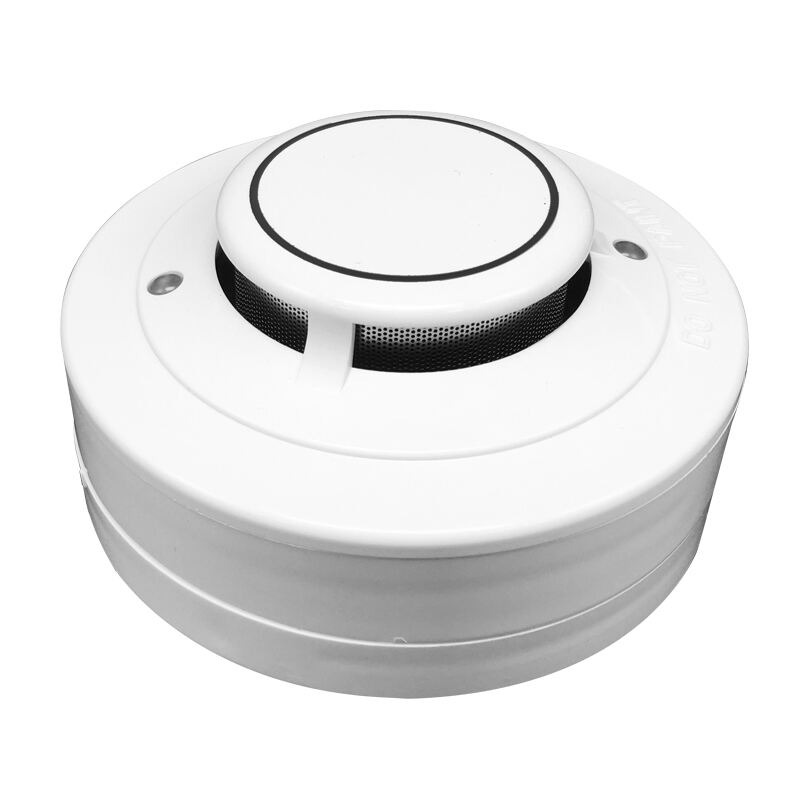Utvecklingen av brandsäkerhetsteknologi har revolutionerat hur vi skyddar liv och egendom. I centrum av denna förändring ligger rökdetektor , en avgörande enhet som utgör den första försvarslinjen mot potentiellt förödande bränder. Dessa sofistikerade övervakningssystem har blivit oersättliga i både bostäder och kommersiella lokaler och har grundläggande förändrat hur vi arbetar med byggnadssäkerhet och efterlevnad av regler.
Moderna rökdetektorer kombinerar avancerade sensorteknologier med intelligent övervakning för att erbjuda omfattande skydd. Från jonisationsgivare som upptäcker snabbt brinnande eld till fotoelektriska detektorer som är särskilt effektiva på att identifiera glödande situationer, fungerar dessa enheter outtröttligt för att upprätthålla en säker miljö. Deras användning har dramatiskt minskat antalet skadade och dödade samt egendomsskador orsakade av brand världen över.
Rökdetektorer använder olika detekteringsmetoder för att identifiera potentiella brandfaror. Jonisationsrökdetektorer innehåller en liten mängd radioaktivt material som joniserar luften och skapar en elektrisk ström som flyter mellan två laddade plattor. När rök kommer in i kammaren störs denna ström, vilket utlöser larmet. Fotometriska rökdetektorer använder istället en ljusstråle och en sensoranordning. När rökpartiklar kommer in i detektorrummet sprids ljusstrålen, vilket aktiverar alarmsystemet.
Valet mellan olika typer av rökdetektorer beror på de specifika kraven för det utrymme som ska skyddas. Vissa avancerade modeller kombinerar både jonisations- och fotometriska tekniker för att erbjuda tvåspektrumsskydd och säkerställa maximal säkerhetsomfattning i olika brandscenarier.
Moderna rökdetektorer innehåller ofta smarta teknikfunktioner som förbättrar deras effektivitet. Dessa kan inkludera trådlös anslutning, mobilaviseringar och integrering med byggnadshanteringsystem. Sådana avancerade funktioner möjliggör övervakning i realtid, omedelbar avisering vid potentiella problem och förbättrade reaktionstider under nödsituationer.
Genom att integrera rökdetektorer i större säkerhetsnätverk skapas en mer robust och responsiv säkerhetsinfrastruktur. Den här sammankopplade approachen säkerställer att när en detektor identifierar ett problem kan alla sammankopplade enheter varna boende, vilket ger viktiga extra sekunder till evakuering.
Byggnadskoder i olika jurisdiktioner kräver specifika föreskrifter för installation och underhåll av rökdetektorer. Dessa regler anger vanligtvis det minsta antalet enheter som krävs, deras placering i byggnaden samt vilken typ av detekteringsteknologi som måste användas. Efterlevnad av dessa koder är inte frivillig – det är en lagstadgad skyldighet som fastighetsägare måste uppfylla.
Regelbundna inspektions- och testprocedurer beskrivs också i byggnadskoderna, för att säkerställa att rökdetektorer förblir funktionsdugliga och effektiva under hela sin livslängd. Dokumentation av dessa underhållsaktiviteter krävs ofta för att visa pågående efterlevnad av säkerhetsföreskrifter.
Olika branscher står inför varierande krav på rökdetektorssystem. Sjukvårdinrättningar måste till exempel upprätthålla särskilt stränga standarder på grund av deras användares sårbarhet. På liknande sätt behöver industriella anläggningar som hanterar lättantändliga material specialiserade detekteringssystem utformade för deras specifika risker.
Att förstå och implementera dessa branschspecifika krav är avgörande för att upprätthålla korrekt säkerhetsöverensstämmelse och undvika eventuella påföljder eller ansvarsfrågor. Professionell konsultation krävs ofta för att säkerställa att alla relevanta standarder efterlevs.

Effektiviteten hos ett rökdetektorssystem beror i stor utsträckning på korrekt placering och installation. Enheter bör installeras på varje våning i en byggnad, inklusive källare och vindar. I bostäder krävs rökdetektorer i varje sovrum och utanför sovområden. Kommersiella installationer kan kräva ytterligare enheter beroende på planlösning och beläggning.
Höjdläge, avstånd till väggar och närhet till luftventiler spelar alla avgörande roller för optimal placering av detektorer. Professionell installation säkerställer att dessa faktorer hanteras korrekt, vilket maximerar systemets effektivitet.
Regelbunden underhåll är nödvändigt för att säkerställa fortsatt funktionalitet hos rökdetektorer. Månadstester med hjälp av testknappen, regelbunden rengöring för att förhindra dammackumulering samt batteribyte (i batteridrivna enheter) är grundläggande underhållsåtgärder. Professionella besiktningar bör utföras årligen för att verifiera systemintegritet och efterlevnad.
Alla underhållsaktiviteter ska dokumenteras, inklusive testdatum, batteribyten samt eventuella reparationer eller utbyten som genomförts. Denna dokumentation fungerar som bevis på efterlevnad av säkerhetsföreskrifter och kan vara avgörande i frågor om ansvar.
Avancerade rökdetektionssystem ger betydligt förbättrad säkerhet genom möjligheten till tidig varning och minskade felaktiga larm. Integrationen av smarta funktioner gör det möjligt att omedelbart meddela ansvariga parter, vilket möjliggör snabbare nödbesvar. Denna förbättrade reaktionstid kan innebära skillnaden mellan en mindre händelse och en stor katastrof.
Moderna system kan också skilja mellan olika typer av rök och miljöförhållanden, vilket minskar falska larm samtidigt som verkliga hot snabbt identifieras och hanteras.
Även om den initiala investeringen i kvalitativa rökdetektionssystem kan verka betydande, är de långsiktiga ekonomiska fördelarna stora. Många försäkringsbolag erbjuder sänkta premier för fastigheter med avancerade brandskyddssystem. De potentiella kostnadsbesparingarna från förhindrad brandskada och avbrott i verksamheten överstiger vid långt installationens och underhållskostnaderna.
Dessutom hjälper efterlevnad av säkerhetsföreskrifter genom korrekt implementering av rökdetektorer till att undvika kostsamma böter och rättsliga problem som kan uppstå vid säkerhetsöverträdelser.
Rökdetektorer bör vanligtvis bytas ut vart tionde år från tillverkningsdatumet. Om en enhet fungerar felaktigt eller visar tecken på skador före denna tid måste den omedelbart bytas ut. Tillverkningsdatumet finns oftast på baksidan eller insidan av detektorn.
Vanliga orsaker till falska larm inkluderar dammackumulering, matlagningssmoke, ånga från duschar, insekter som kommer in i enheten och åldrade sensorer. Regelbunden rengöring och korrekt placering bort från kök och badrum kan hjälpa till att minska falska larm. Vissa moderna detektorer använder avancerade algoritmer för att skilja mellan verkliga hot och vanliga hushållsaktiviteter.
Moderna trådlösa rökdetektorer är i allmänhet lika tillförlitliga som fast installerade system när de är korrekt monterade och underhållna. De erbjuder ytterligare fördelar såsom enklare installation, möjlighet till fjärrövervakning samt möjligheten att skapa sammankopplade nätverk utan att dra kablar. De kräver dock regelbundna batterikontroller och utbyte för att säkerställa kontinuerlig drift.

Upphovsrätt © 2024 RISOL TECH LTD Alla rättigheter förbehållna Integritetspolicy